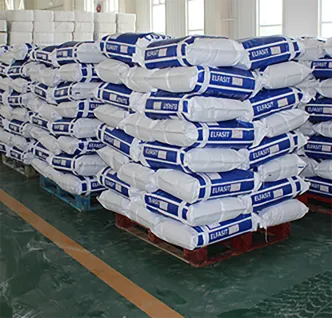
Dec . 14, 2024 09:57 Back to list
Understanding HPMC and Its Applications in Various Industries
What is HPMC?
Hydroxypropyl Methylcellulose (HPMC) is a semi-synthetic polymer derived from cellulose, a natural polymer that forms the structural component of plant cell walls. HPMC is widely used across various industries, including pharmaceuticals, food, cosmetics, and construction, due to its unique properties and versatility.
Chemical Structure and Properties
HPMC is created by chemically modifying cellulose through the introduction of hydroxypropyl and methyl groups. This modification enhances the solubility of cellulose in water, allowing HPMC to dissolve in cold water to form a viscous solution. The degree of substitution of the hydroxypropyl and methyl groups can be adjusted during manufacturing, which allows for tailoring the viscosity and solubility characteristics of the resultant HPMC.
The structure of HPMC consists of a long chain of glucose units, similar to cellulose, but with additional hydroxypropyl and methyl groups. This structure imparts several key properties to HPMC, including
1. Thickening Agent HPMC is widely used to increase the viscosity of solutions, making it an effective thickening agent in various formulations. This can be particularly beneficial in products like sauces, dressings, and personal care items.
2. Film-Forming Property HPMC can form a continuous film upon drying, making it ideal for use in coatings and as a binder in various applications, including pharmaceuticals.
3. Stabilizer Due to its ability to maintain emulsions and suspend particles, HPMC is often used as a stabilizing agent in many products. This is particularly important in food and cosmetic formulations to ensure uniformity and prevent separation.
.
Applications of HPMC
hpmc چیست

1. Pharmaceuticals HPMC is commonly used as a binder in tablet formulations, helping in the manufacturing of cohesive tablets that dissolve properly in the body. Its controlled-release properties are invaluable in creating sustained-release drug formulations.
2. Food Industry In food products, HPMC is employed as a thickener, emulsifier, and stabilizer. It enhances the texture of sauces, dairy products, and baked goods, and is often found in gluten-free recipes to improve dough performance.
3. Cosmetics and Personal Care HPMC is a popular ingredient in cosmetics, such as lotions and creams, where it acts as a thickener and stabilizer. It contributes to the product's feel and consistency, making it easier to apply and enhancing the overall sensory experience.
4. Construction In the construction industry, HPMC is used as an additive in mortar and cement products. It improves workability and water retention, allowing for better adhesion and longer open time during application.
5. Ceramics HPMC is also used in ceramic applications, assisting in the shaping and forming processes due to its binding properties.
Safety and Regulations
HPMC is generally recognized as safe (GRAS) by various food safety authorities, including the U.S. Food and Drug Administration (FDA). Its low toxicity profile and non-irritating properties make it suitable for use in food, pharmaceuticals, and cosmetics, with a long history of safe consumption.
Conclusion
In summary, Hydroxypropyl Methylcellulose (HPMC) is a versatile compound with numerous applications across various industries. Its ability to function as a thickener, emulsion stabilizer, binder, and controlled-release agent makes it an invaluable ingredient in pharmaceutical formulations, food products, cosmetics, and construction materials. As demand for natural and safe ingredients continues to rise, HPMC will likely remain a key player in diverse applications for years to come.
-
Versatile Hpmc Uses in Different Industries
NewsJun.19,2025
-
Redispersible Powder's Role in Enhancing Durability of Construction Products
NewsJun.19,2025
-
Hydroxyethyl Cellulose Applications Driving Green Industrial Processes
NewsJun.19,2025
-
Exploring Different Redispersible Polymer Powder
NewsJun.19,2025
-
Choosing the Right Mortar Bonding Agent
NewsJun.19,2025
-
Applications and Significance of China Hpmc in Modern Industries
NewsJun.19,2025







